Prinsenhof - Delft
“The Museum Prinsenhof Delft and the adjacent Prinsentuin, an ancient monastery garden, carry a rich history and hold great national significance. One of the most important events in Dutch history took place here: the assassination of William the Silent. The monumental monastery is being sustainably restored, with a new design for the outdoor space reestablishing the historical unity and responding to future challenges.”
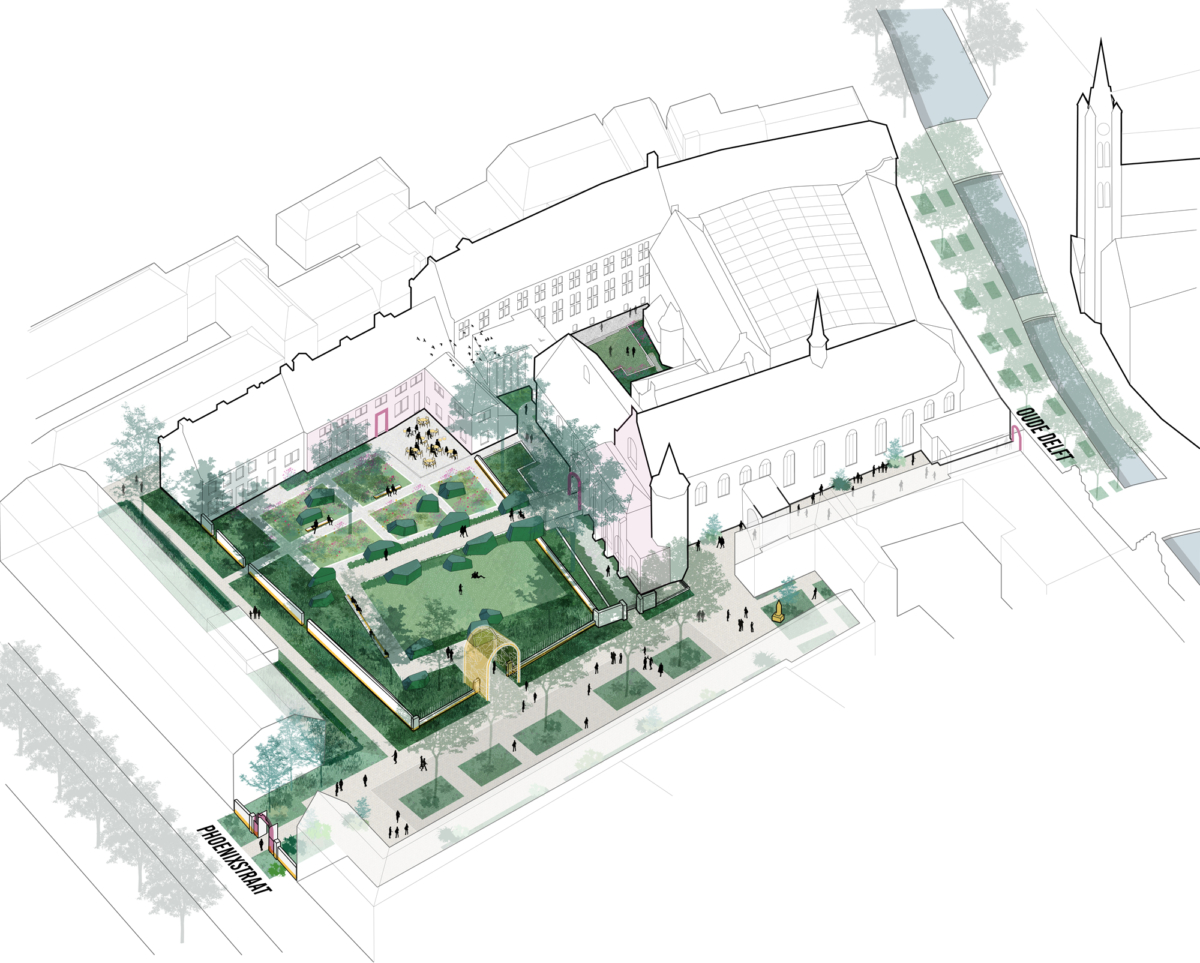
Three zones in harmonious balance
By creating three distinct zones, inspired by the historical layout of the original courtyard, a thoughtful zoning is achieved. The lively Sint Agathaplein (pink) forms the first zone: a gathering space with monumental chestnut trees that also serves as the gateway to the city. The second zone (green), the Prinsentuin, offers a peaceful retreat, with an herb field at its heart. An intriguing path through green hedges leads to the new museum entrance. The third zone (dark green), the most tranquil space, is a garden of herbs and flowers, designed in a classical style that reflects the history of the Prinsenhof.
The design creates a dynamic interplay of lines that seamlessly connects with the surrounding area.
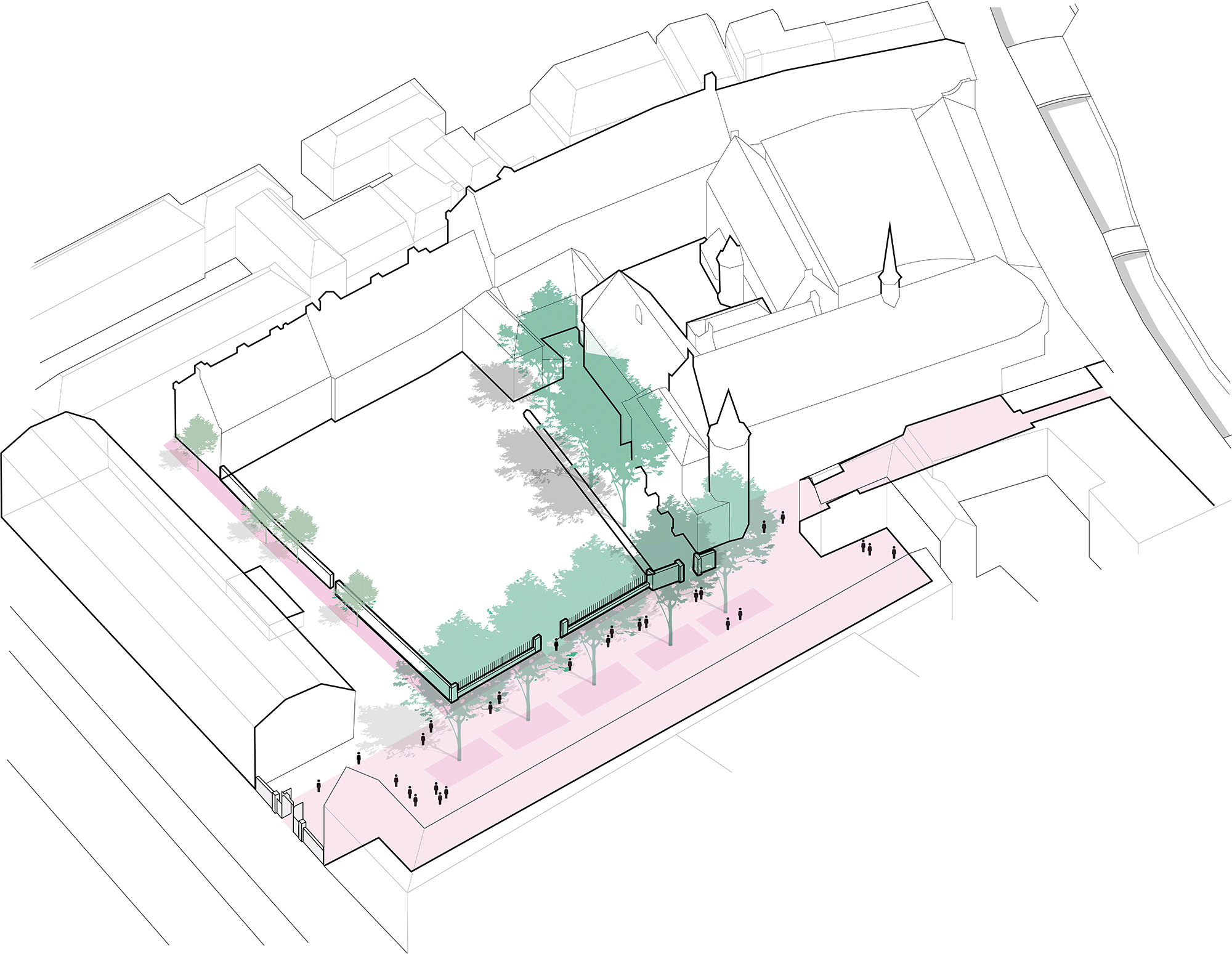
“This design transforms the outdoor space into a place that reflects both the stories of the past and those of the current residents of Delft, with a focus on the interesting challenges of the future.” – Sander van den Bosch
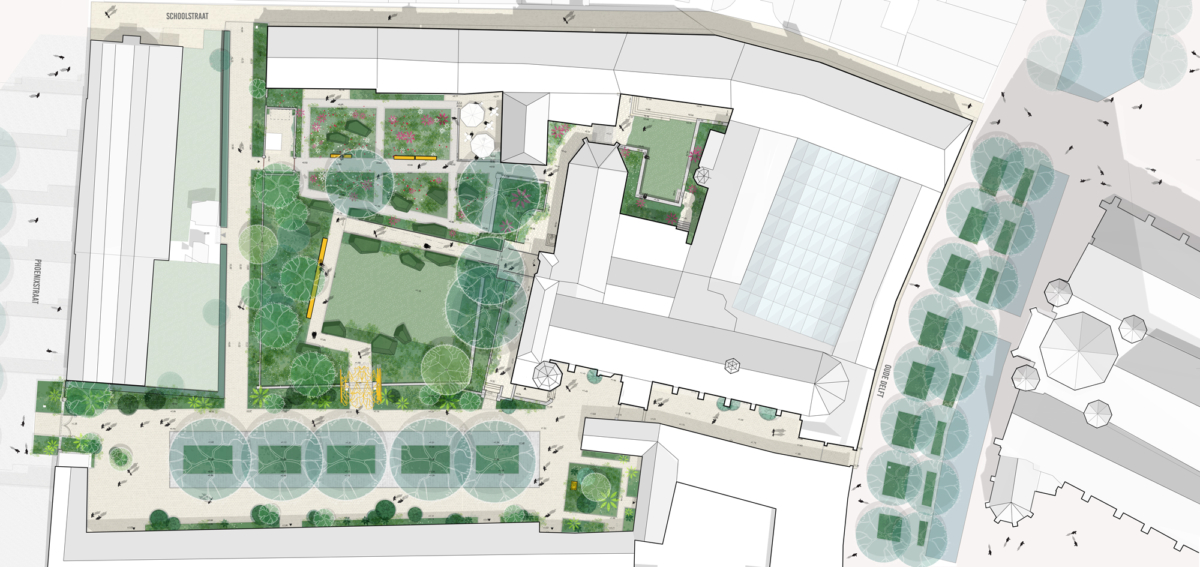
An Immersive Walk
A walking route that connects the three zones also marks the new entrance to the museum, designed by the architectural firm BiermanHenket. From the Sint Agathaplein, a gate leads into the garden. The broad path meanders through a landscape of raised grassy fields. A gently sloping path, framed by impressive green hedges rising from a flowerbed, offers the museum a dignified new entrance.
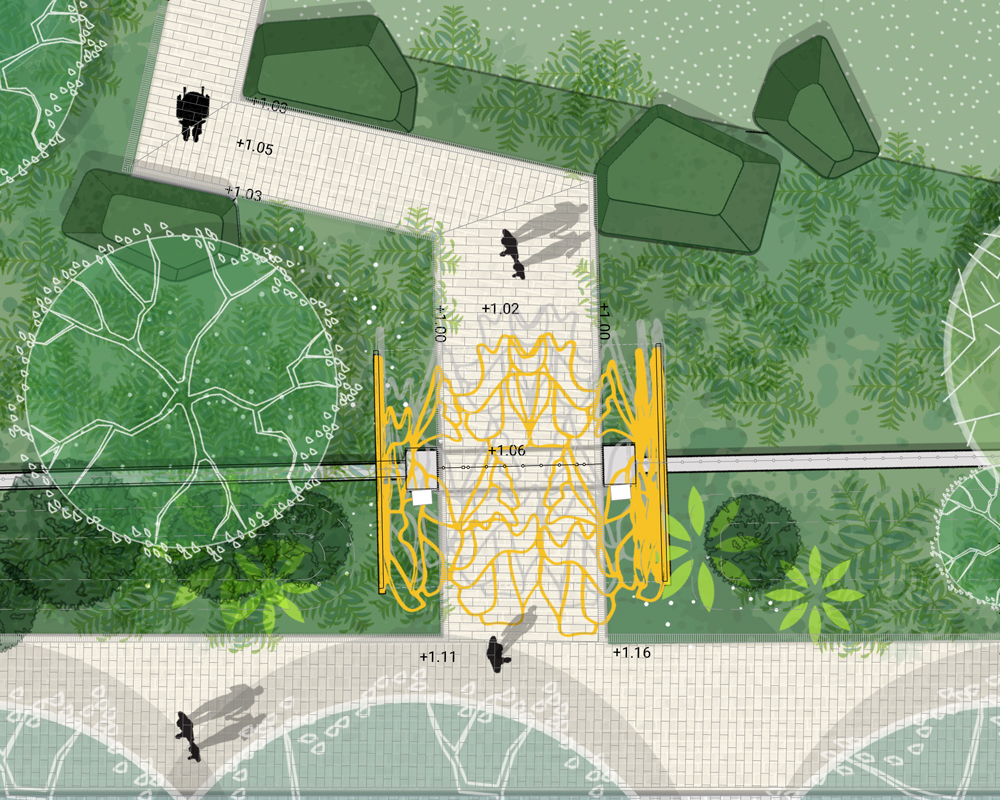
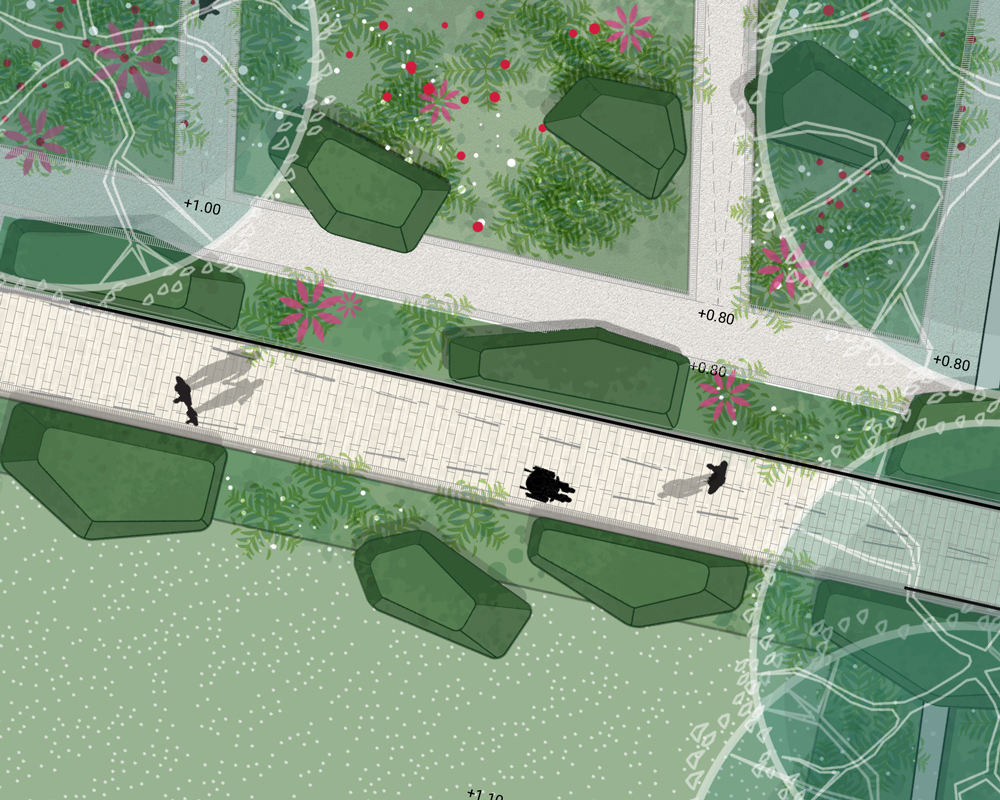
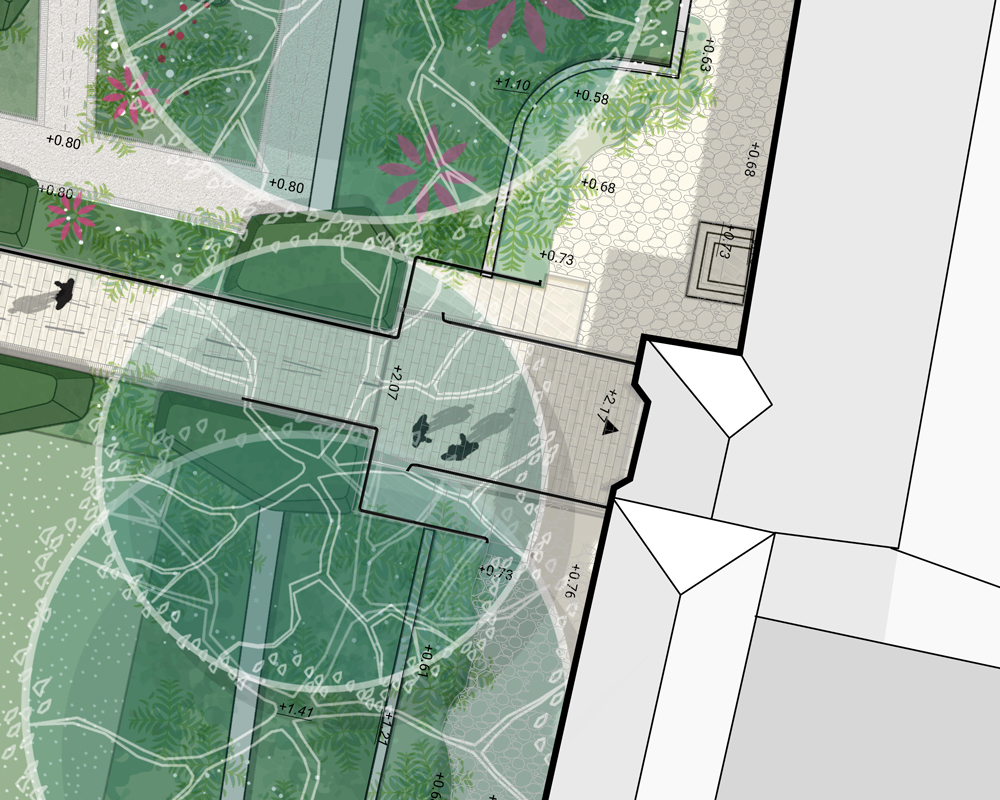
A place of the city
The Prinsentuin has always been more than just a tourist destination: it is a place deeply woven into the fabric of the city of Delft. In collaboration with the city’s residents, the design for the garden was shaped. Their stories and ideas helped to create an outdoor space that reflects the history of the city. An inviting place that offers room for various uses. On quiet days, it serves as a decorative garden, where visitors can leisurely walk and relax amidst beautiful plants. On busy days, the garden transforms into a lively gathering spot.
The wide main path ensures that visitors can pass each other effortlessly. The spacious benches, placed in the sun, offer comfortable seating to enjoy the outdoors. The open field provides space for a variety of small-scale activities, such as meetings or film screenings, making it an extension of the museum’s function.
“We are transforming the Prinsentuin into a place where everyone feels welcome, where visitors can quietly enjoy nature and where there is space for interaction and activities.”
The Prinsentuin of Tomorrow
The garden has been designed with a focus on the future, incorporating sustainable and climate-resilient principles with attention to biodiversity. Existing trees, which have defined the character of the garden for decades, will be preserved, and the existing greenery will be enriched with biodiverse planting. We are focused on creating habitats for various species, promoting ecology, and attracting insects and other wildlife. We are also making the garden climate-adaptive, with the ambition to eliminate runoff, instead capturing, reusing, or infiltrating rainwater.
In this way, the Prinsentuin of Tomorrow will not only be a green and pleasant place for visitors but also a sustainable, climate-resilient space that contributes to biodiversity.
History as Inspiration
A look into the past revealed that the Prinsentuin and Sint Agathaplein were originally one enclosed monastery garden, divided into three sections. Over time, the garden lost its cohesion, and the square and garden became disconnected. The redesign of the garden now provides an opportunity to restore this historical unity.
The history of the Prinsentuin is reflected in its characteristic, well-worn materials and the beautiful, mature trees. The path winding through the garden is made from reclaimed cobblestones, laid in various traditional Delft patterns. These elements are being preserved as much as possible to ensure the history remains tangible.
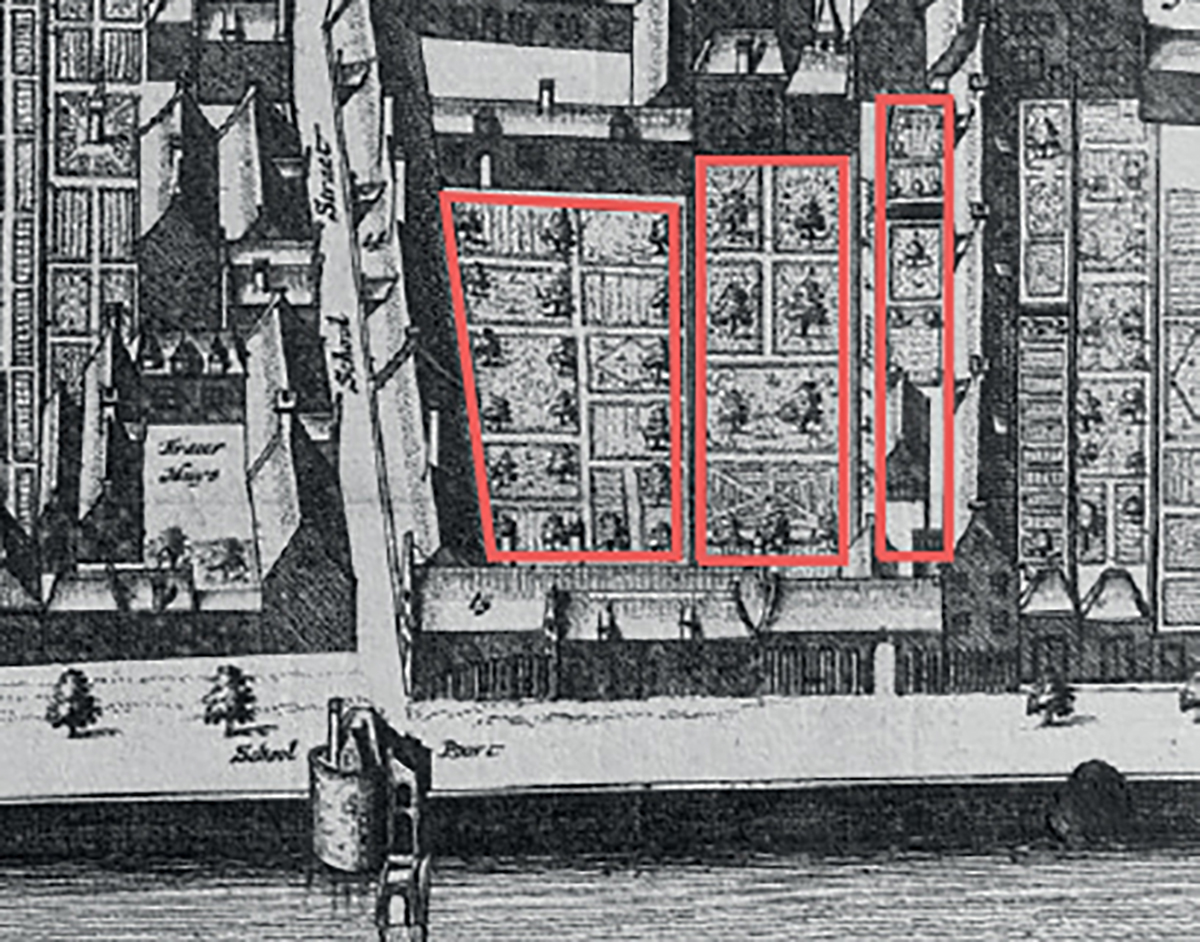
- Location
- Delft
- Status
- In ontwikkeling
- Client
- Gemeente Delft, Museum Prinsenhof Delft
- Together with
- BiermanHenket, DEV_ real estate